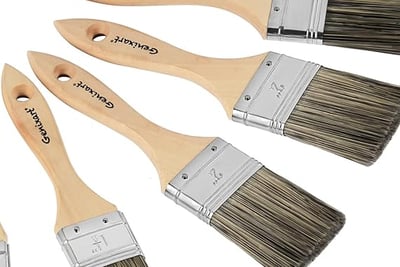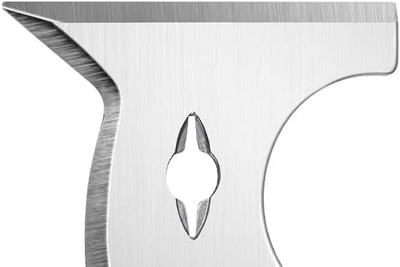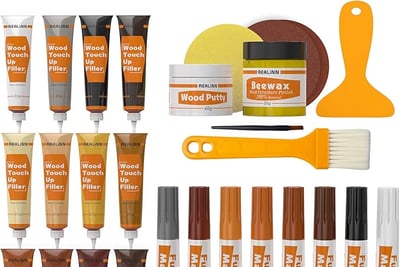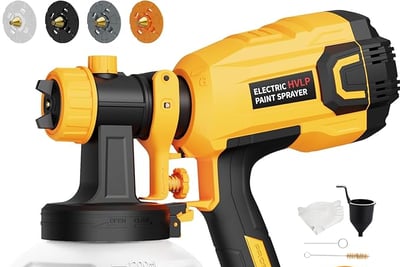Transforming Trash to Treasure: Creative Upcycling Ideas for Old Furniture
8 min read


Introduction to Upcycling
Upcycling is a creative practice that goes beyond traditional recycling by transforming discarded materials or old items into new products of higher value or quality. Unlike recycling, which often involves breaking down materials to create something entirely different, upcycling retains the original form while enhancing its aesthetic or functional attributes. This distinction makes upcycling an appealing option for those looking to reduce waste creatively.
One of the most significant benefits of upcycling is its positive impact on the environment. By repurposing old furniture items or materials that might otherwise contribute to landfills, individuals help reduce the volume of waste generated. This practice not only conserves resources but also minimizes the demand for new products, thereby lowering the carbon footprint associated with production and shipping. The environmental advantages of upcycling extend beyond mere waste reduction; they promote a more sustainable approach to consumption patterns.
In addition to its ecological benefits, upcycling can lead to substantial cost savings. Individuals can save money by revitalizing old furniture rather than purchasing new items. This financial aspect is particularly appealing in today’s economy, where thriftiness is increasingly prioritized. Furthermore, upcycling encourages individuals to develop their creativity and craftsmanship skills. Each project can be a unique reflection of personal style, allowing upcyclers to create one-of-a-kind pieces that cannot be found in stores. As people engage in upcycling, they discover new ways to express their creativity while contributing positively to the environment.
Overall, upcycling stands as a practical and artistic way to address waste and stimulate personal ingenuity. By understanding the motivations behind this practice, individuals can begin to see the potential in old furniture, leading to innovative solutions that benefit both themselves and the planet.
Assessing Your Old Furniture
Before embarking on a journey of upcycling, it is essential to conduct a thorough assessment of the old furniture available in your space. This evaluation will help identify pieces that are worth renovating and those that may not be suitable for transformation. Start by examining the overall condition of your furniture. Inspect for structural integrity, signs of damage such as cracks or loose joints, and any issues related to mold or pest infestations. Furniture pieces in good structural condition are typically more feasible candidates for creative upcycling projects.
Next, consider the materials used in your old furniture. Solid wood pieces tend to be durable and versatile, making them excellent candidates for transformation. On the other hand, particle board or composite materials may not withstand the demands of upcycling. It’s also important to evaluate the aesthetic appeal of your furniture. Outdated styles or finishes may not fit into modern décor, but with a fresh coat of paint or innovative design, these items can become focal points in your home.
While assessing your furniture, note any unique features. Items with interesting shapes, carvings, or textures can add charm to your upcycling projects. Additionally, consider the size of the piece in relation to your living space. Smaller items like chairs or side tables may be easier to upcycle and can lead to delightful transformations that conserve space.
Lastly, create an inventory of the items you wish to keep versus those that are beyond repair. Discard any pieces that are too damaged to restore or are made of materials that will not hold up well. This process of evaluation will not only help you declutter your space but also highlight furniture treasures that are waiting to be rejuvenated into functional art. The careful assessment of your old furniture is the vital first step in the rewarding journey of upcycling.
Creative Upcycling Ideas for Different Furniture Types
Upcycling old furniture offers a fantastic opportunity to express creativity while promoting sustainability. Here are some innovative ideas for various types of furniture, categorized for your convenience. Each project includes a brief description to inspire your next DIY venture.
Chairs: One exciting upcycling idea is to transform an old wooden chair into a whimsical outdoor planter. Start by removing the seat and painting the chair in vibrant colors to add personality. Once dry, attach a weather-resistant liner inside the chair’s frame and fill it with potting soil. This not only provides a unique garden focal point but also repurposes both the chair and your outdoor space.
Tables: Convert a small side table into a stylish coffee table by adding a glass top. Begin by sanding and painting the base of the table to match your decor. Measure and cut a piece of glass to fit the top. This project requires minimal materials but results in a functional and chic piece that enhances your living space.
Dressers: Dressers can be upcycled into stunning bathroom vanities. Measure your bathroom space and determine the height needed for a comfortable sink installation. Remove the top drawers, paint or stain the dresser, and affix a sink into the remaining surface. This not only creates ample storage but also adds character to your bathroom, blending vintage charm with modern functionality.
Shelves: Old bookshelves can be revitalized by transforming them into a stunning media console. Sand down the shelves and give them a fresh coat of paint or stain. Use fabric or decorative paper to line the back for added visual interest. This project provides not only a practical storage solution but also enriches the aesthetic of your living room.
These upcycling projects illustrate that with creativity and a bit of effort, furniture can be repurposed into striking and functional pieces. Embracing such transformations allows for individualized decor while contributing to environmental sustainability.
Essential Tools and Materials for Upcycling
Upcycling furniture is a gratifying endeavor that allows individuals to breathe new life into old pieces. To embark on this creative journey, several essential tools and materials are indispensable for ensuring a successful transformation. Primarily, one should gather quality paints and brushes, which are vital for both aesthetic appeal and protection of the furniture surface. Choosing non-toxic paints will not only save health risks but also contribute positively to environmental sustainability.
In addition to paints, sandpaper is crucial for preparing surfaces before any painting or staining occurs. A variety of grit levels will aid in achieving a smooth finish. For more advanced refinishing projects, wood stains and sealants may be necessary to enhance the natural beauty of the wood while offering protection against wear.
Hardware such as screws, brackets, and hinges can refresh old furniture designs and improve functionality. If your project involves restoring or replacing hardware, tools like a drill or screwdriver will become important allies in this process.
For those aiming at more elaborate upcycling projects, optional tools such as saws, a staple gun, and a hot glue gun may prove beneficial. These can assist in dismantling or assembling furniture in innovative configurations. However, beginners should approach these tools with caution and opt for simpler projects to build confidence.
Safety is of utmost importance when undertaking any upcycling project. Always wear personal protective equipment such as gloves and masks to shield against dust and fumes. Moreover, familiarizing oneself with tool operation and safety guidelines can significantly prevent injuries. By following these tips and assembling the right tools and materials, anyone can successfully engage in the rewarding practice of upcycling furniture.
Step-by-Step Upcycling Process
Upcycling old furniture can be an enriching experience, allowing individuals to take worn-out pieces and transform them into unique, functional works of art. The process of upcycling involves several key steps, starting with planning the project.
Initially, assess the furniture you wish to upcycle. Consider its condition, style, and the purpose you want it to serve post-upcycle. Sketching your ideas can help visualize the final outcome. Think about color schemes, materials to use, and how the finished piece will fit into your environment. Once you have a clear plan, it’s time to gather your supplies. Commonly needed materials include sandpaper, paint, brushes, fabric, and hardware. Depending on your design, you might also need tools such as a screwdriver, drill, or saw.
Next, prepare your workspace. It should be well-ventilated and spacious enough to accommodate your furniture. Begin by cleaning the piece thoroughly, removing any dust or dirt. If necessary, repair any damages by filling scratches or dents. The next step often involves sanding the surface to ensure that paint or finishes adhere properly.
Once the furniture is prepped, move on to executing your design. This may include painting, reupholstering, or adding embellishments. Take your time with each step, allowing paint to dry completely and ensuring fabric is securely attached. If painting, consider using a primer, especially on surfaces that are difficult for paint to adhere to.
Finally, focus on the finishing touches. This can mean applying a protective sealant or adding decorative elements such as stencils or decals. Each of these steps is critical in achieving a successful upcycle. By following this structured approach, individuals can confidently transform their old furniture into beautiful, functional pieces, contributing to sustainable practices and personal expression.
Showcasing Your Upcycled Furniture
Once the transformation process of your old furniture is complete, the next step is to effectively showcase your newly upcycled pieces. To begin with, consider the overall aesthetic of your home or garden and how your upcycled furniture can either complement or enhance your existing decor. Thoughtfully incorporating these pieces into your living space not only adds character but also promotes the values of sustainability and creativity.
For indoor arrangements, think about how the style and design of your upcycled furniture interact with your current furnishings. Mixing modern and vintage styles can create a dynamic and inviting atmosphere. Place an upcycled coffee table at the center of your living room, surrounded by comfortable seating. Use bright colored cushions or unique accessories to draw attention to your reclaimed furniture, and ensure that it becomes a focal point in the room.
Outdoor spaces can benefit greatly from upcycled furniture as well. Consider using an old wooden bench to create a cozy nook in the garden. Pair it with vibrant planters filled with flowers, creating a charming focal area. Alternatively, an upcycled picnic table can serve as both a functional and decorative element for backyard gatherings. These items not only provide utility but also serve as testimonies to your creative capabilities.
To document your upcycling journey and showcase your completed projects, take high-quality photographs. Natural lighting is your best friend for outdoor photography, while indoor shots should focus on angles that highlight the furniture’s design details. This practice can help create a visually appealing portfolio to share on social media platforms or personal blogs. By displaying your upcycled furniture, you inspire others to consider creative solutions for their discarded items, fostering a community centered around innovation and sustainability.
Conclusion and Next Steps
As we have explored throughout this blog post, upcycling old furniture not only serves an aesthetic purpose but also plays a significant role in sustainability efforts. Transforming trash into treasure is not merely a trend; it reflects a conscious shift towards environmental responsibility and creative reuse. From simple refurbishments to more elaborate redesigns, there are numerous methods to give new life to unwanted furniture.
By embracing upcycling, individuals can tap into their creativity, creating unique pieces that not only fit their personal style but also contribute to a more eco-friendly lifestyle. Whether it be turning an old wooden chair into a vibrant plant stand or repurposing shelves into a child’s play area, the possibilities are as vast as one’s imagination. It’s essential to start small if you are new to upcycling; each project can be a stepping stone to more intricate endeavors.
To further your upcycling journey, consider joining local workshops or online communities where fellow enthusiasts share their ideas and experiences. Engaging in platforms such as social media groups or dedicated websites can provide valuable inspiration and tips from others who have successfully transformed their furniture. By participating in these groups, you may discover new techniques, resources, and collaborations that can enhance your skills.
As you embark on your upcycling projects, remember that the goal is to have fun while being kind to the environment. Each piece of furniture you choose to upcycle is a step towards reducing waste and promoting creativity. So why not gather your tools, unleash your imagination, and begin your journey of transforming discarded items into beautiful, functional pieces that reflect your personality? The world of upcycling awaits you.











